We were somewhere around DeLand on the edge of I-4 East when the Beaver Nuggets began to take hold. Luckily, Doctor Professor Ma’am and I didn’t encounter any bats on our drive to or from Daytona Beach, but we shared a truly exhausting, truly American experience at Buc-ee’s (https://buc-ees.com/), the colossal convenience store just off I-95, a unique shopping experience as vast, overwhelming, and occasionally maddening as its home state of Texas.
Imagine Wawa, Cracker Barrel, and Walmart Supercenter twisted into a sweaty, throbbing throuple, and that comes close, but still doesn’t quite capture the sensory overload of Buc-ee’s. I counted 43 locations on the website, but there are only two in Florida, both new: off the highway in Daytona Beach and St. Augustine. We didn’t even bother to fill up the car with gas there, given the surprising crowd at lunchtime on a Friday. Instead, we hustled inside to see what food and snacks awaited us in the sprawling superstore.
They say everything is bigger in Texas: the deserts, the hats, the trucks, the cattle, the churches, the guns, the belt buckles, and unfortunately the intolerance (see recent news for far too many examples). Well, Buc-ee’s goes big in every way as well. Once we made our way through sections of the store devoted to kitschy casual clothing, folksy home décor, and touristy novelties (the “schlock and awe” department), we made it to the the real draws: stacks and stacks of snacks and snacks.
Here is the wall of jerky, which is the kind of wall Texas should focus on building. There is also a jerky counter, where you can get any of the jerky varieties you want, by the pound. It was easier and faster to grab bags off the wall for $7.99 each. 
I chose cherry maple, Bohemian garlic, and sweet and spicy beef jerky. So far, the cherry maple was disappointingly bland, but the Bohemian garlic was packed with strong, garlicky flavor.

Doctor Professor Ma’am is more of a fan of gummy candy, and she was faced with overwhelming options, here at the wall of gummies. 
She went with hot cinnamon gummy bears (I think that smell, taste, and texture are all gross, but more for her!) and chamoy-flavored peach rings, pictured below with three different flavors of Rice Krispy Treats she chose (regular, salted caramel, and “Fruity”), plus fried pecans.

I’m not really into nuts. I just buy them for her, and I almost never snack on them myself. But when we busted into these fried pecans back at home, all I could say was “GOOD LORD.” Even with the hell-squirrel armed with a sharp fork on the bag, “GOOD LORD” is the appropriate response. I couldn’t believe how good they were. At $14.99, that was the most expensive single item we bought, but it is a good-sized bag, and they are so rich, they should last quite a while.
As an unabashed fan and collector of condiments, sauces, and preserves, Buc-ee’s had a staggering selection to tease, tantalize, and tempt me.


I went a little mad, but we all go a little mad sometimes. I couldn’t resist (I’m your) huckleberry and blackberry preserves, peach-chipotle and mango-pineapple-habanero salsas, prickly pear cactus jam, candied jalapeños, sweet and spicy ghost pepper hot sauce, and pickled quail eggs!

I fully admit I haven’t tried most of these yet, since our fridge door has only so much space (and it is already stuffed with interesting things in bottles and jars, as one would expect from me). But I did just bust open the pickled quail eggs, after letting the jar chill in the fridge overnight, and I liked it a lot! Very spicy and tangy from the vinegary brine, which includes garlic and jalapeños. “What, you egg?” [I stabbed it.]
It was even hard to choose a soft drink, with dozens of options. This is only one of the three huge soda fountain setups. I grabbed an extra-large cup, avoided anything I could find elsewhere, and sampled sips of the Buc-ee’s-specific flavors. Favorites included pineapple cream soda, piña colada soda, orange Creamsicle soda, sarsaparilla, strawberry lemonade (non-carbonated), and my big winner, the cream soda on the far right, which I ultimately filled our shared cup with for the schlep home. Doctor Professor Ma’am said it tasted like pecan pie filling as a soda, and she wasn’t wrong. It was too sweet to be refreshing, but a very tasty cream soda nonetheless. We also tried the blue cream soda, which I thought tasted like banana-flavored candy. She liked it until the chemically aftertaste hit.  We both really wished some of those sodas were sold in bottles or cans, since we would have definitely bought a few different ones to savor later, but alas, they were fountain drinks only.
We both really wished some of those sodas were sold in bottles or cans, since we would have definitely bought a few different ones to savor later, but alas, they were fountain drinks only.
There were multiple stations to get hot, fresh food, including a station with barbecue sandwiches already wrapped in foil. I grabbed us a pulled pork sandwich that was delicious. Doctor Professor Ma’am was tired and hungry by this point, so we split it in the car in the parking lot on the way out to keep hungry from approaching hangry. Forgive my freestyling, but we savagely ravaged this sandwich, and its richness fixed us from being sad bitches. The barbecue sauce was sweet, but it didn’t overwhelm the smoky savoriness of the pork. 
There were also touch-screen kiosks for ordering other food, including tacos, burritos, chicken fingers, and a few other sandwiches that get freshly assembled. I was really hoping to get a pastrami Reuben on a pretzel roll, which came highly recommended, but they weren’t available! I was so disappointed, which is a quintessentially American take, to bemoan the loss of one option in this land of abundance. So I chose a “Chopping Block” sandwich that came with sliced rare roast beef, horseradish, Swiss cheese, lettuce, tomatoes, red onions, and I asked to add jalapeños for a 50-cent upcharge. We had to wait a while for that one, since the sandwich-makers were slammed due to 20 busy touchscreen kiosks all beaming in constant orders, but it was worth the wait. The roast beef was tender, flavorful, and rare, the way I like it, the hoagie roll was nice and soft, and the sandwich was still warm by the time I got it home.  To the right is a chopped brisket sandwich that was also really good — pre-wrapped in foil like the pulled pork sandwich, and mixed up with sweet sauce. I liked it even better than the pulled pork.
To the right is a chopped brisket sandwich that was also really good — pre-wrapped in foil like the pulled pork sandwich, and mixed up with sweet sauce. I liked it even better than the pulled pork.
She was disappointed by the fresh potato chips, but I thought they were fine. Just plain, crispy, salty, slightly greasy chips, as expected. 
A fried apple pie was yet another impulse buy. She enjoyed it in the car (eating it over the open bag to catch the cinnamon sugar cascade), and the one bite I took was really good. The flaky fried crust was terrific. We hoped it would be like the bubbly, crackly McDonald’s fried apple pies of our ’80s childhoods, but it turned out to be so much better than those.

Here’s half of the brisket sandwich I saved for Doctor Professor Ma’am back at home, along with a cream cheese kolache (left), a strawberry cheese kolache (right), and a sausage, cheese, and jalapeño kolache (bottom). Kolaches are pastries that Czech immigrants brought to Texas. There are sweet and savory varieties, and as you can see, the sweet ones look a lot like danishes. The sausage inside that bottom one was hot dog-shaped, but much chewier, like a Slim Jim. It was okay. The pastry itself is just like chewy white bread. 
I also got a boudin kolache that looked almost exactly like the one on the bottom in this photo, stuffed with the savory Cajun pork-and-rice sausage, but that one didn’t last long enough to get photographed.
They had a fudge counter with nearly 20 different varieties of fudge, all neatly divided into squares. You could buy any combination of four and get two more free, so how could we refuse? My wife chose the different fudge flavors, and there is a chocolate one for sure, a chocolate pecan, a “gooey pecan,” a “tiger butter” in the top left (vanilla, chocolate, and peanut butter), and a blueberry cheesecake fudge (bottom left). The sweet fudge lady would cut off little sample slivers, and I sampled key lime pie and banana pudding fudge. Both were good, but too rich to get entire slices of, on top of everything else. She warned me I might not like the banana pudding fudge, but I sure showed her!

Anyway, these are ridiculously rich, so I know we will make them last. We might even freeze some, forget about them for a while, and then have a pleasant surprise when we rediscover them days or probably weeks later.
The very first thing that tempted Doctor Professor Ma’am was a box of six pecan pralines. I suggested we do one loop around the store first to get the lay of the land before we start grabbing everything, and that’s when she found individual pecan pralines at the fudge counter. She was thrilled to be able to just get one, rather than a six-pack, with all the other stuff we chose. I broke off one little morsel, and it was almost cloyingly sweet and intensely rich.

Since I regularly review chips in my series of Tight Chips features here on The Saboscrivner, I couldn’t resist grabbing a few small bags of classic, barbecue, and hot Buc-ee’s chips. I don’t know how they’ll be, but I got ’em. 
A sample guy was giving out samples of the barbecue-flavored Baked Chees-ee Curls, the Buc-ee’s version of Cheetos, and they were good enough to bring home a small bag. I’m surprised Frito-Lay hasn’t come out with a barbecue Cheetos flavor, in all these decades.
And we couldn’t go all the way to Buc-ee’s without grabbing a bag of Beaver Nuggets, one of the most famous (infamous?) and recommended snacks from fellow travelers. These things are unbelievably good. Crunchy, toffee-sweet, buttery, salty. Imagine Corn Pops cereal, but a million times better in every possible way. Neither of us had ever tried them before, but I figured she would love them, and I was right. As for me, I can eat a whole bag of chips standing up in my kitchen without even thinking about what I’m doing, but the Beaver Nuggets are so much richer, heavier, and more substantial than chips, I was perfectly content after just crunching on a few of them. 
The Buc-ee’s Nug-ees on the right are a “Bold ‘n’ Spicy” version of the sweet, crunchy Beaver Nuggets. Their texture is softer, though — more like puffy Cheez Doodles that you can easily crush between your tongue and the roof of your mouth. They are well-dusted with spicy, cheesy orange powder that is spicier than regular Cheetos or Cheez Doodles, but much less spicy than Flamin’ Hot Cheetos. I can only imagine combining the two varieties in a bowl as some kind of decadent snack mix.
Finally, I grabbed two large boudain [sp] sausage links from a freezer case, and I got the small package of sliced smoked venison sausage at the jerky counter. Those were $5 and $4.40 respectively — cheaper than I expected. I haven’t tried them yet, but my hopes are high.
Our first trip to Buc-ee’s was both physically and mentally draining. It is a lot to process, and if you arrive hungry and like to try new foods and snacks, you can get yourself in a bit of trouble there, as we did. But it’s such an overwhelming experience, somewhere between the food halls in cosmopolitan cities like Philadelphia or Seattle and a Southern Walmart on Black Friday. I suspect that if we ever return, the novelty and mystery will have worn off, so we can quickly grab a few favorites and rush out, without feeling the need to see and try everything, like we did this time. Trader Joe’s definitely feels like that now, after breaking the bank on my first-ever visit so many years ago, but now just running in and out for a few staples while dodging the mobs. Novelty fades. Newness wears off. That’s why I constantly seek it out and share it here, with YOU.
But beyond the novelty of new sandwiches, snacks, and sodas, Buc-ee’s also felt like the kind of roadside attractions that used to line America’s highways and byways — bemusement parks that drew cross-sections of society away from their homes and out of their cars, those in-between places that made the journey so much more interesting (and often weirder) than the destination, before every highway exit started to feature the same corporate fast food restaurants and chain stores.
Being in a new job in academia where I no longer work directly with our diverse student body, and generally avoiding crowds and social situations for the past two years, this was the most people I had been around in a while — and such people! There were exhausted families, bored teenagers, leather-clad bikers, swaggering cowboy types, beachgoers, retirees, active-duty military men and women in uniform, actual Goths (in broad daylight, in Daytona Beach!), a guy who looked like Gung-Ho from G.I. Joe, and so many tattoos, with a particularly large amount of spider webs on elbows. The two of us only noticed one guy in an overtly political T-shirt, and we seemed to be the only two people still wearing masks. Stefon would have had a field day. But everyone was passing through Buc-ee’s on their way somewhere, fueling themselves up before or after they fueled up their cars, or stopping to use the gleaming, spotless restrooms (which are indeed glorious, living up to all the hype).
I wondered where that sea of sweaty people was off to, and how many had made the pilgrimage to Buc-ee’s as their ultimate destination, as we had, rather than just a rest stop along the way to someplace else. Well, stalwart Saboscrivnerinos, I can tell you that Buc-ee’s is definitely worth a stop — at least once — but don’t expect to get any rest there.



 I was so excited to order all this food, I didn’t notice on the menu that I could pick two separate proteins, or else I would have. But I have no regrets. These were some of the more creative arepas I’ve ever tried, and the short rib was incredible. I always love short ribs, and these were so well-seasoned with the coffee rub and braised to ideal tenderness, I didn’t think twice about missing out on the chicken and the lentils.
I was so excited to order all this food, I didn’t notice on the menu that I could pick two separate proteins, or else I would have. But I have no regrets. These were some of the more creative arepas I’ve ever tried, and the short rib was incredible. I always love short ribs, and these were so well-seasoned with the coffee rub and braised to ideal tenderness, I didn’t think twice about missing out on the chicken and the lentils.


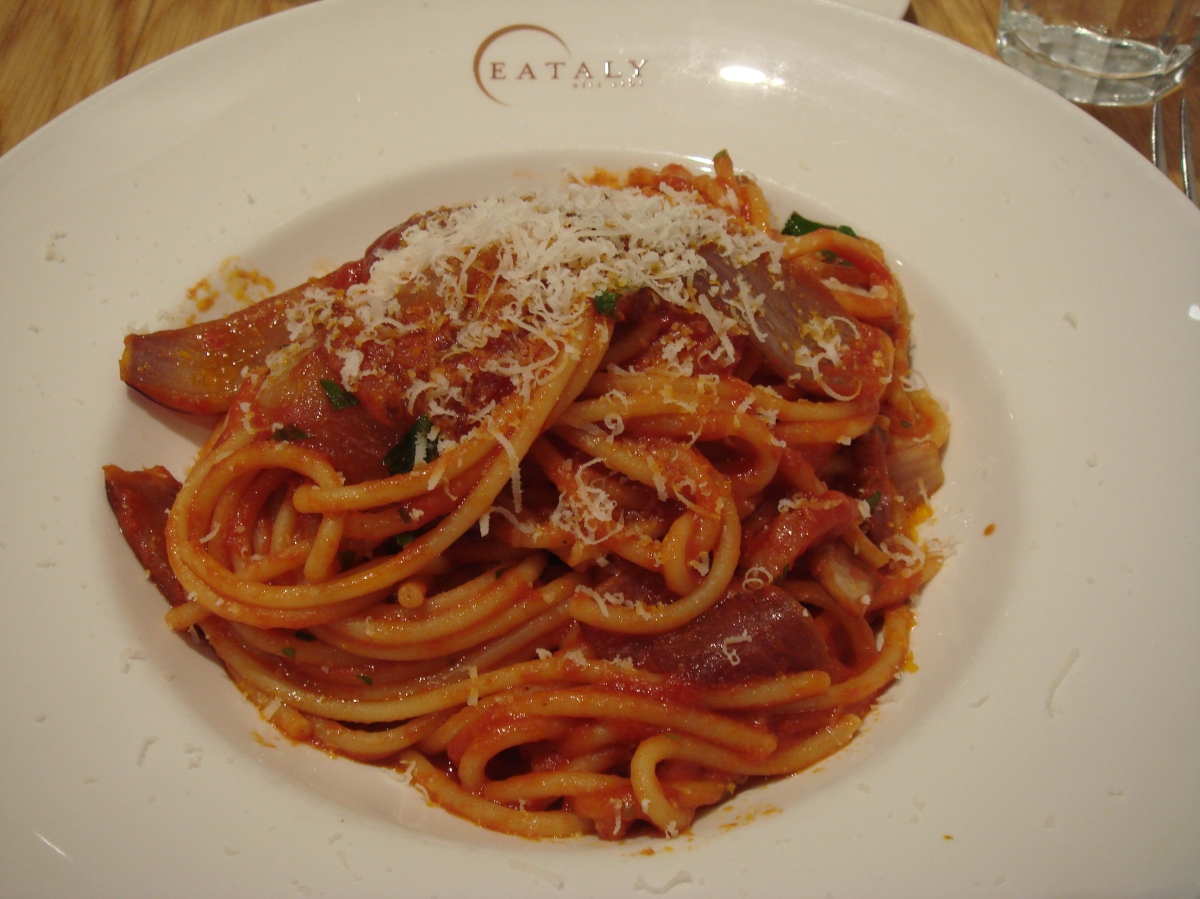
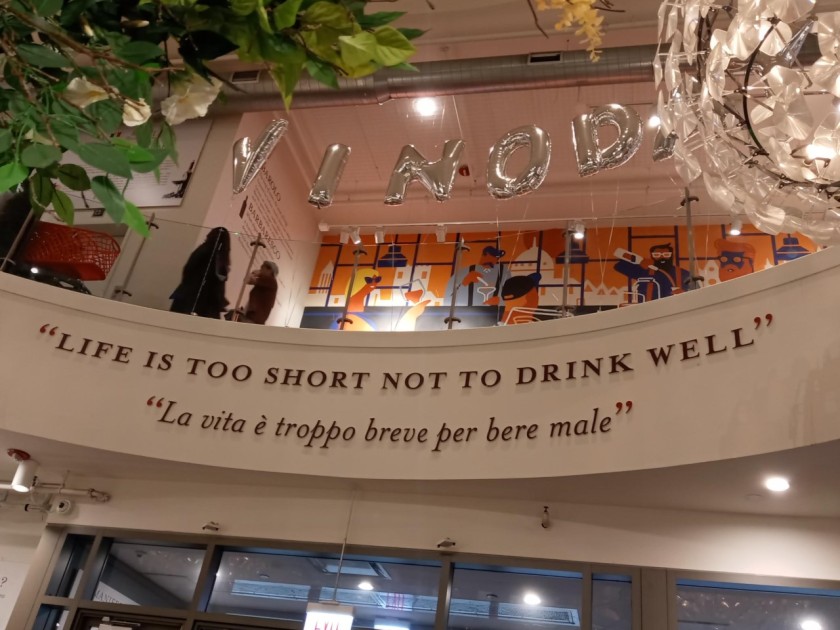
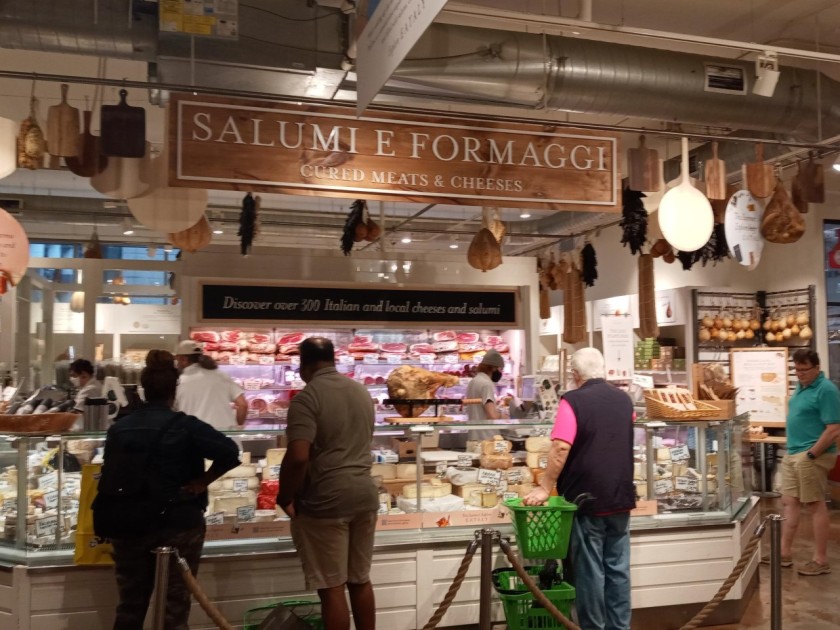
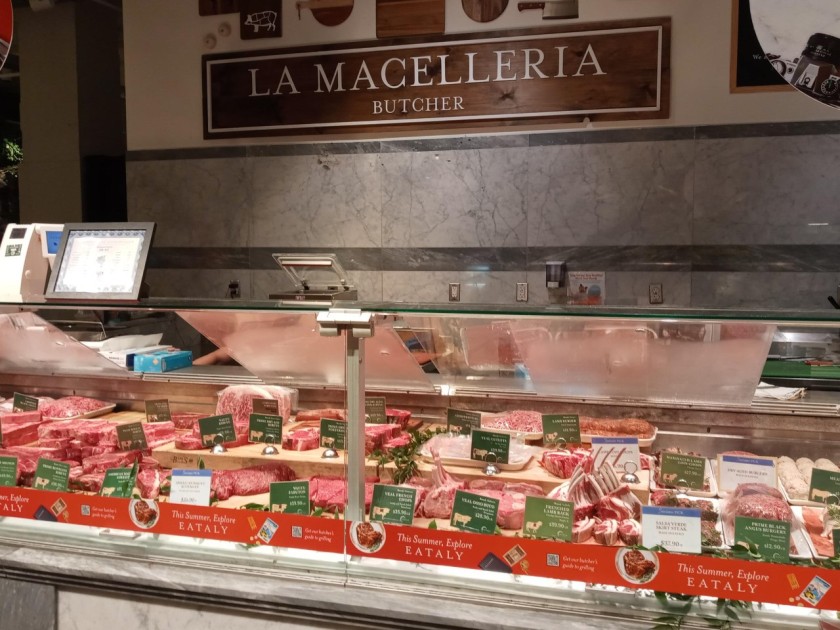
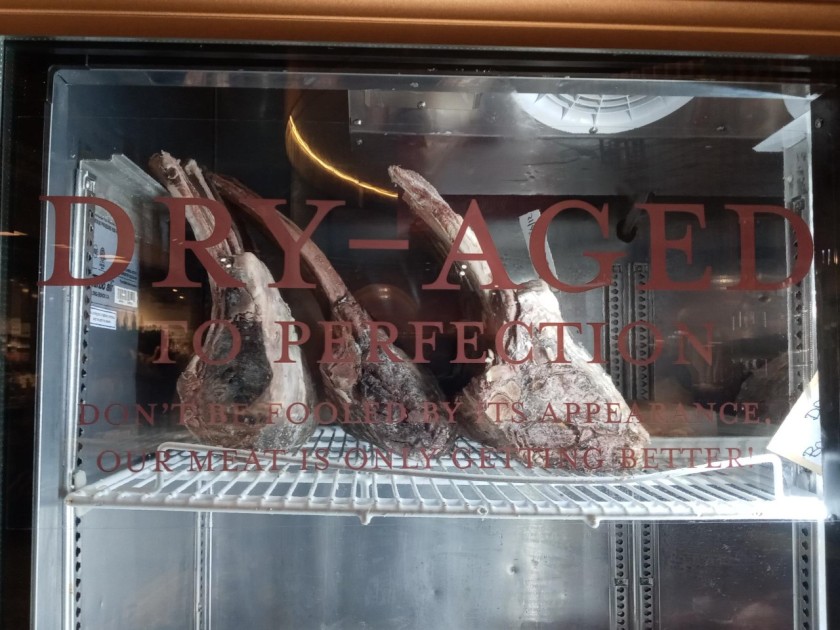
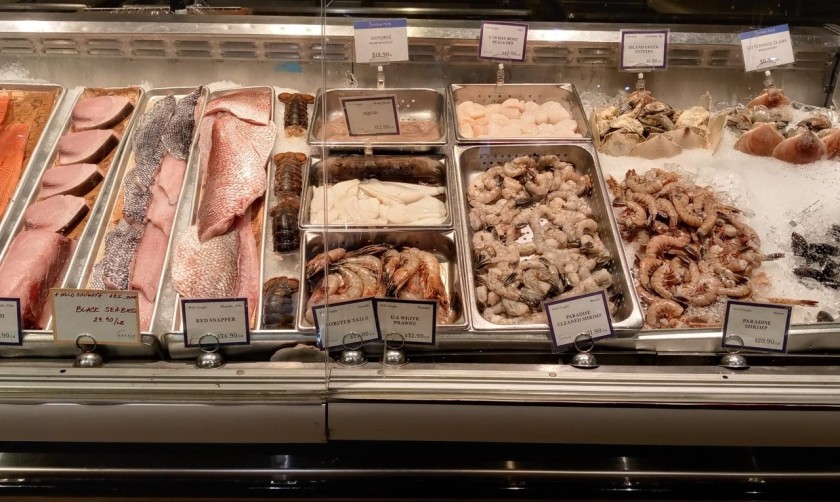
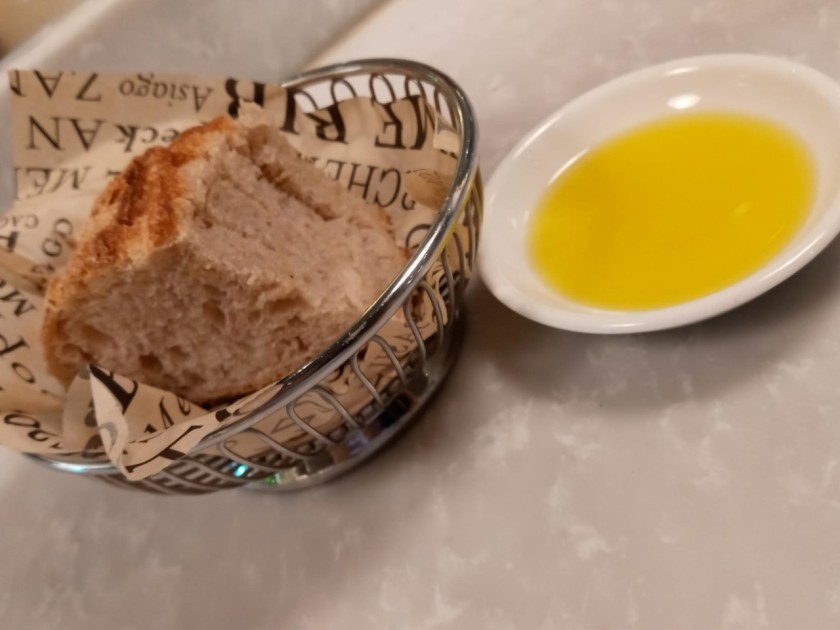
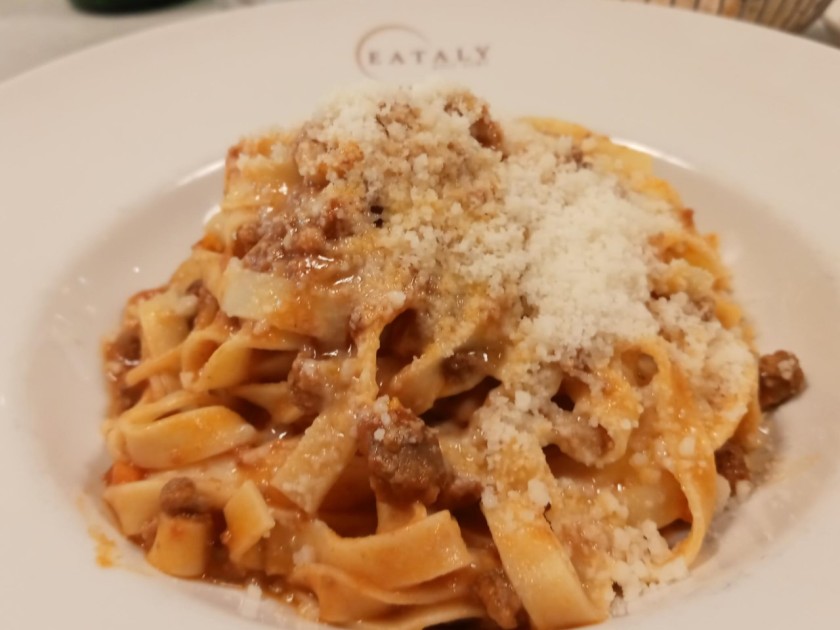
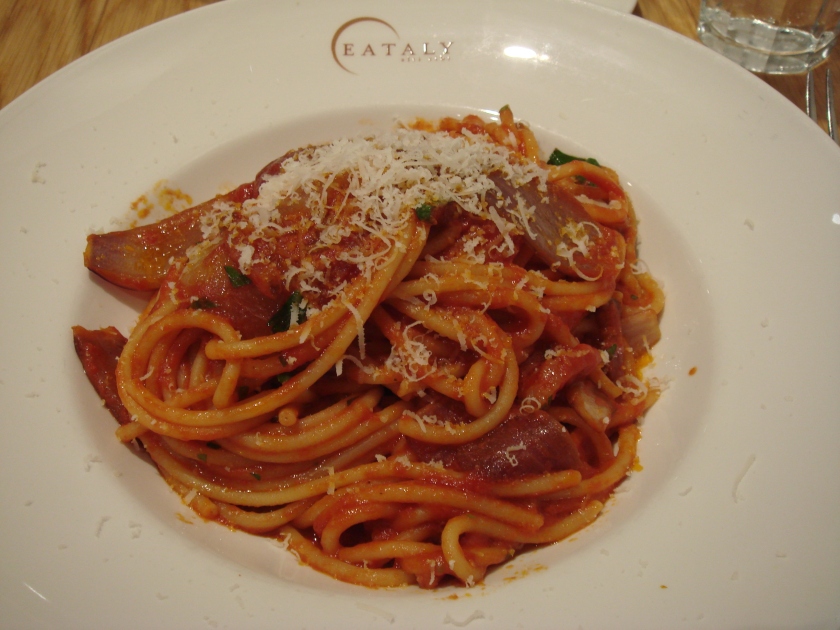 I make pasta all’amatriciana at home as a treat once or twice a year, but since guanciale is hard to find, I usually substitute cubed pancetta, which you can find at Trader Joe’s, Publix, and even Aldi sometimes. If you’re not into bucatini, pretty much any other pasta works well, except for weirdo choices like tri-color wagon wheels. What is the deal with those, anyway?
I make pasta all’amatriciana at home as a treat once or twice a year, but since guanciale is hard to find, I usually substitute cubed pancetta, which you can find at Trader Joe’s, Publix, and even Aldi sometimes. If you’re not into bucatini, pretty much any other pasta works well, except for weirdo choices like tri-color wagon wheels. What is the deal with those, anyway?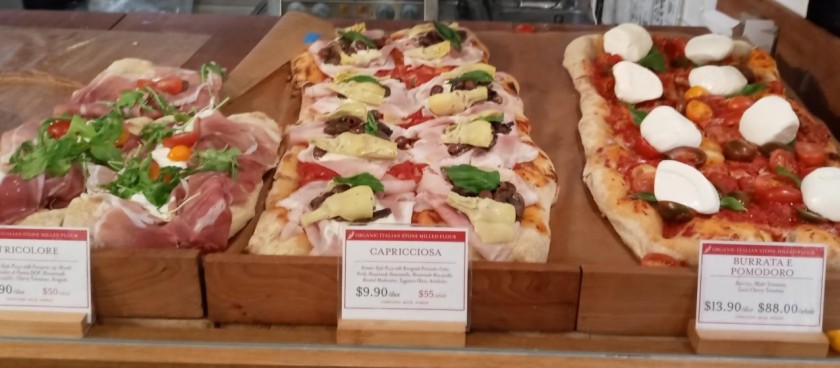
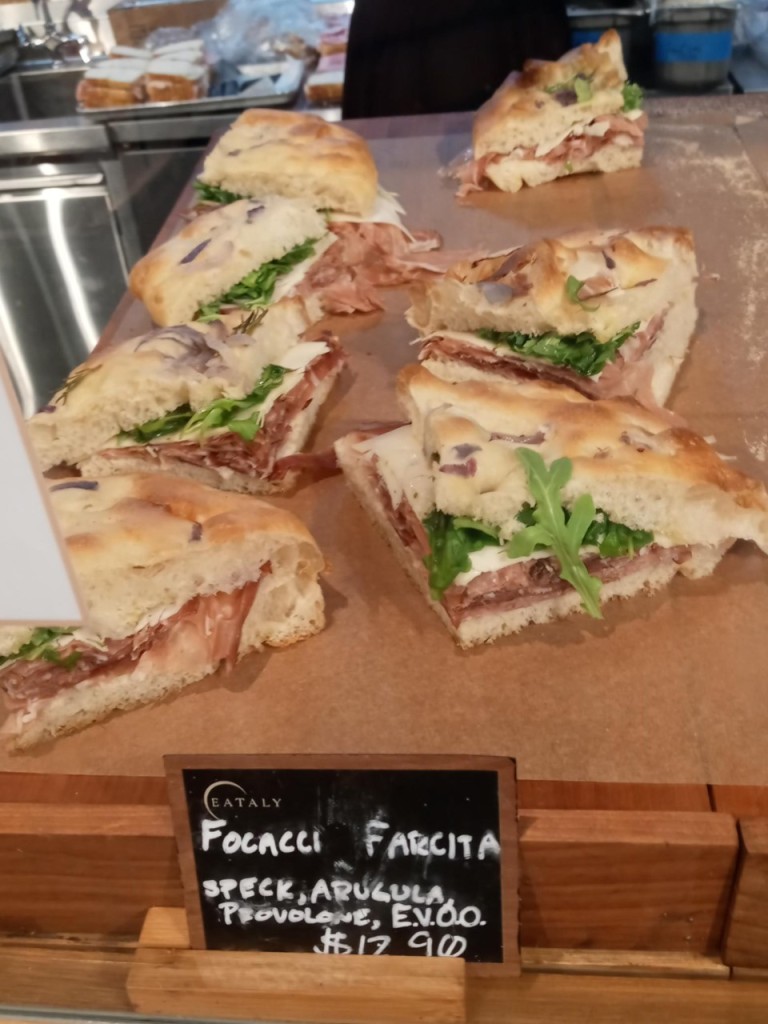
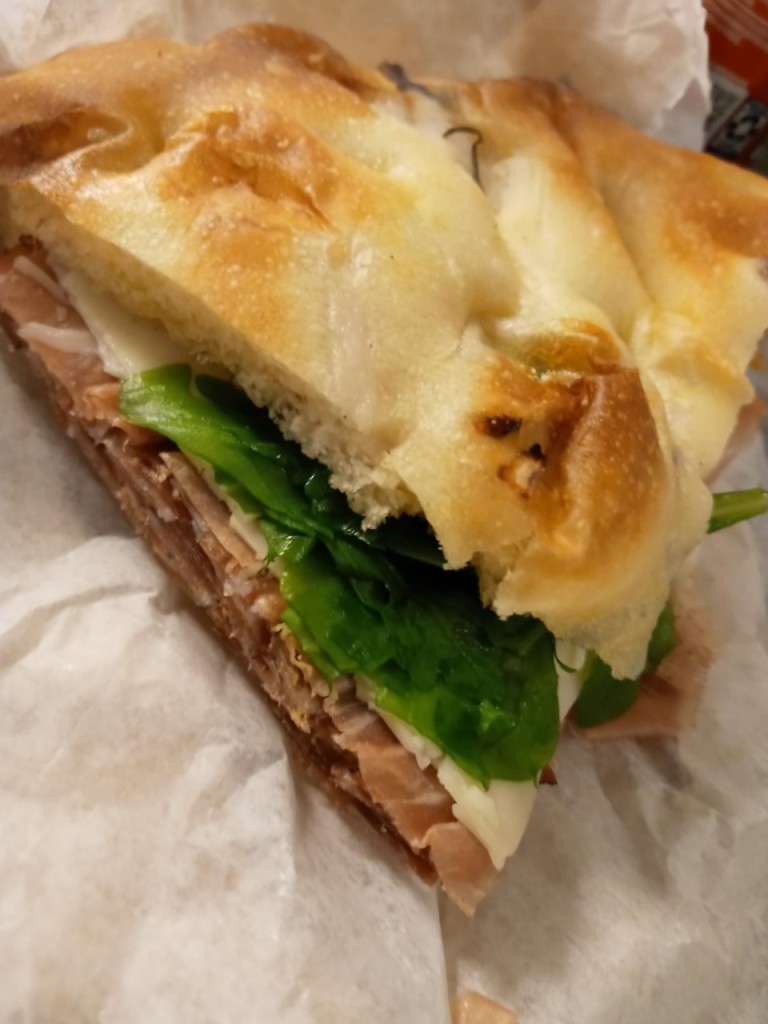
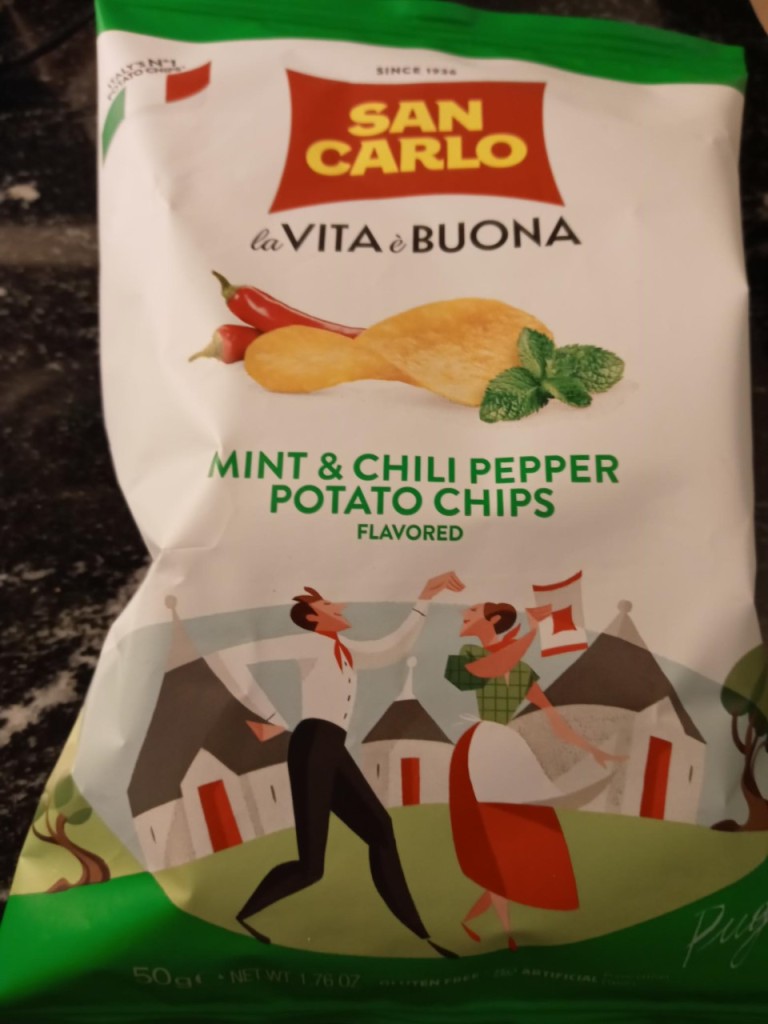
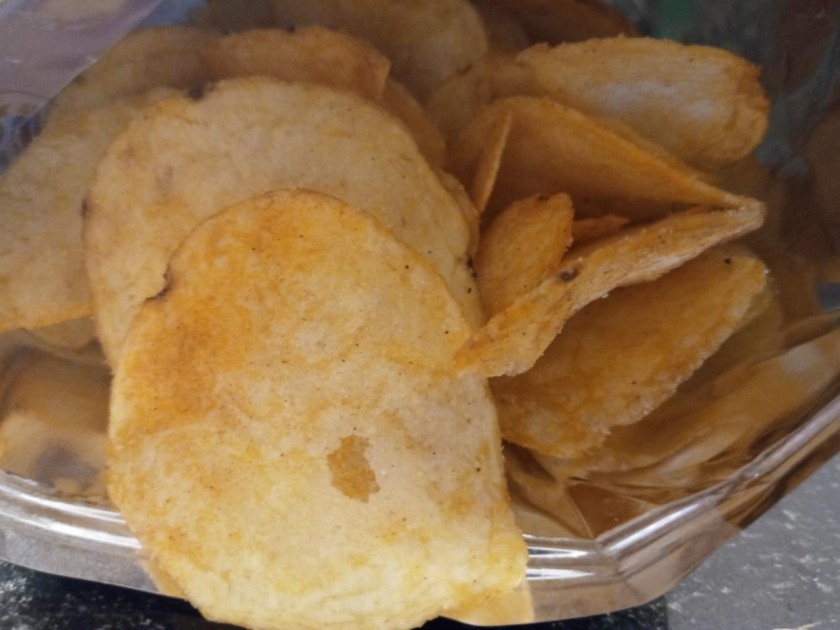









 We both really wished some of those sodas were sold in bottles or cans, since we would have definitely bought a few different ones to savor later, but alas, they were fountain drinks only.
We both really wished some of those sodas were sold in bottles or cans, since we would have definitely bought a few different ones to savor later, but alas, they were fountain drinks only.
 To the right is a chopped brisket sandwich that was also really good — pre-wrapped in foil like the pulled pork sandwich, and mixed up with sweet sauce. I liked it even better than the pulled pork.
To the right is a chopped brisket sandwich that was also really good — pre-wrapped in foil like the pulled pork sandwich, and mixed up with sweet sauce. I liked it even better than the pulled pork.






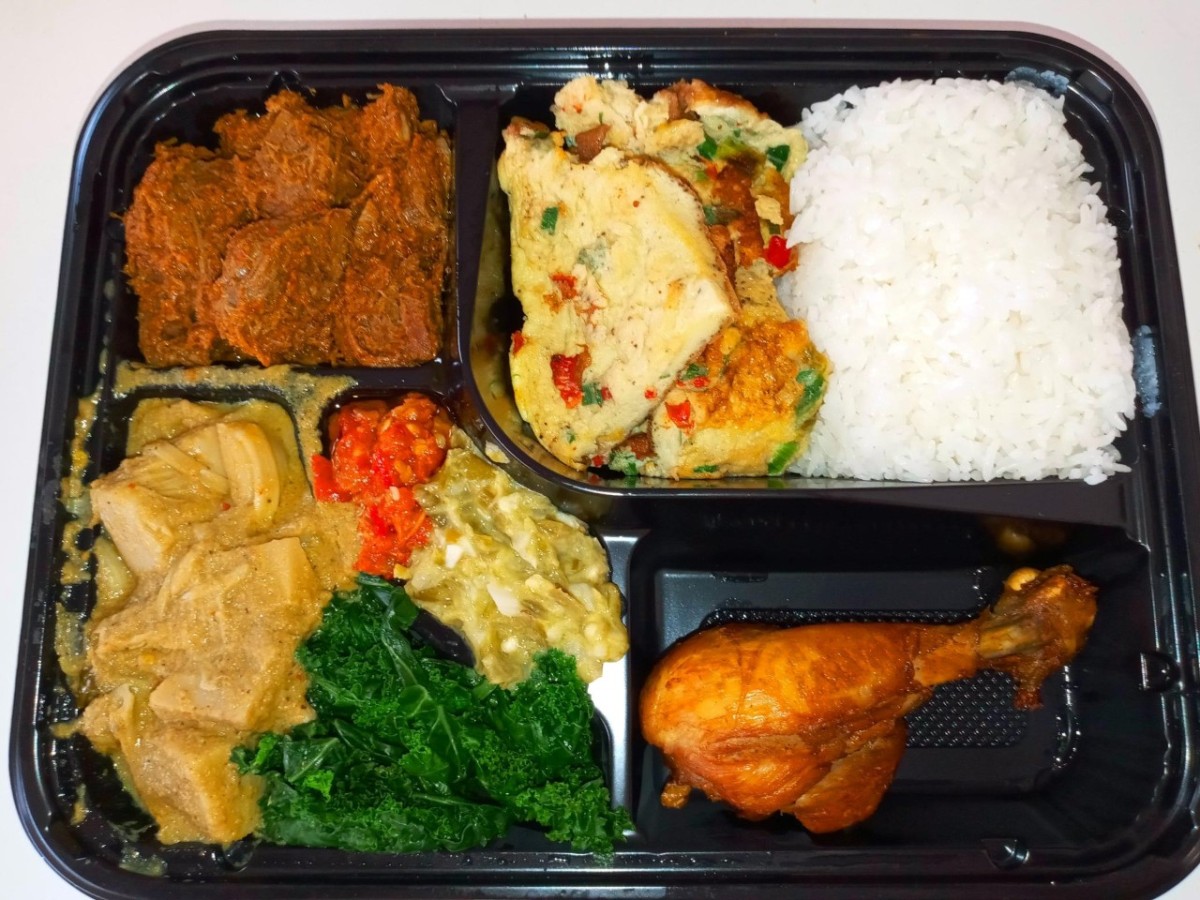


 To the right of the beef rendang was a savory omelet full of peppers and other vegetables. Miraculously, it was still warm by the time I got it home. I love omelets and cooked them often for myself at home, until a recent physical confirmed I have high cholesterol and blood pressure, and my doctor told me eggs are the enemy. (Funny, I know I indulge in delicious and unhealthy foods sometimes, but I always thought eggs were a reasonably healthy and uncontroversial thing to eat. What are you gonna do?) And next to that was a bed of rice, perfect for cutting the heat of some of the dishes in the bottom left compartment.
To the right of the beef rendang was a savory omelet full of peppers and other vegetables. Miraculously, it was still warm by the time I got it home. I love omelets and cooked them often for myself at home, until a recent physical confirmed I have high cholesterol and blood pressure, and my doctor told me eggs are the enemy. (Funny, I know I indulge in delicious and unhealthy foods sometimes, but I always thought eggs were a reasonably healthy and uncontroversial thing to eat. What are you gonna do?) And next to that was a bed of rice, perfect for cutting the heat of some of the dishes in the bottom left compartment. At first I was like “Man, what a small little chicken leg!” but this was the standout of the nasi padang — definitely my favorite part, and one of the best pieces of chicken I’ve eaten in some time. It was fried, but not breaded or crispy, and definitely not greasy. I would not be surprised if it was brined or marinated first, because it had such a good flavor — very savory, with a hint of sweetness. No spiciness here, unlike several of the other ingredients. I wish Chef Ridwan would offer a whole meal of Indonesian fried chicken, because I would totally order that.
At first I was like “Man, what a small little chicken leg!” but this was the standout of the nasi padang — definitely my favorite part, and one of the best pieces of chicken I’ve eaten in some time. It was fried, but not breaded or crispy, and definitely not greasy. I would not be surprised if it was brined or marinated first, because it had such a good flavor — very savory, with a hint of sweetness. No spiciness here, unlike several of the other ingredients. I wish Chef Ridwan would offer a whole meal of Indonesian fried chicken, because I would totally order that.

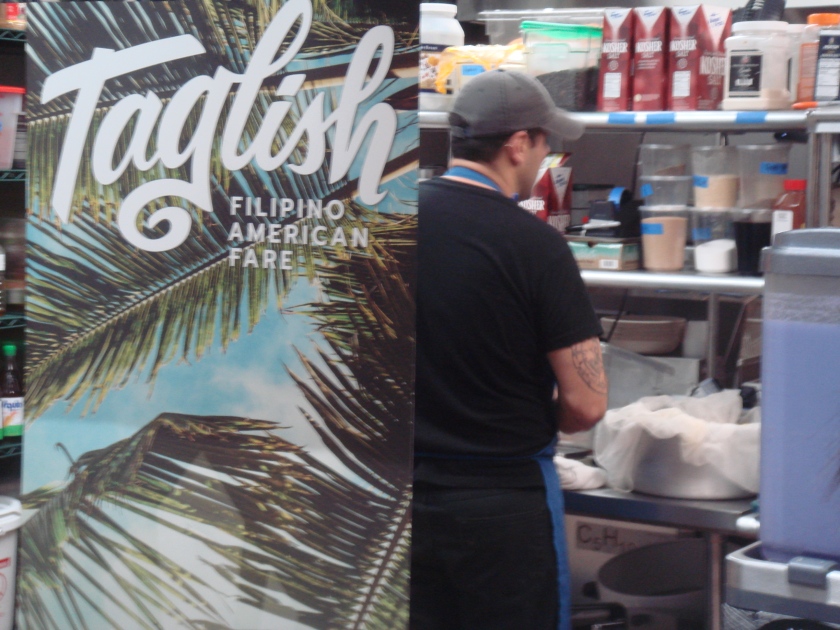





 Note the two included lumpia and the serving of crispy seasoned potatoes, which stayed warm and crispy throughout my meal. I got another small cup of sweet chili sauce, but next time I will request banana ketchup for the fried potatoes, just because I love dipping sauces and condiments — especially new and unfamiliar ones.
Note the two included lumpia and the serving of crispy seasoned potatoes, which stayed warm and crispy throughout my meal. I got another small cup of sweet chili sauce, but next time I will request banana ketchup for the fried potatoes, just because I love dipping sauces and condiments — especially new and unfamiliar ones.

